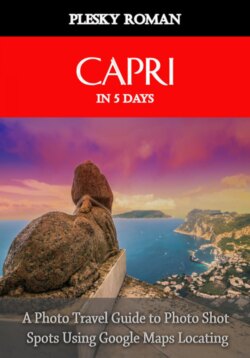Читать книгу Capri in 5 Days - Roman Plesky - Страница 8
На сайте Литреса книга снята с продажи.
Оглавление3.1.1 History
The island was created during the last ice age by a separation from the Sorrento peninsula. It is not of volcanic origin, but the wind blew tufa and ashes from nearby Vesuvius and created an overlay that allows for exceptionally magnificent vegetation.
The name Capri comes from the Latin "capraeae" (goats) and not from the Greek "kapros" (wild boar), although numerous fossil remains of wild boar have been found on the island. When the island was still connected to the mainland in the Paleolithic, it was inhabited by Greeks and then by the Romans. Emperor Augustus, who in the year 29 BC was the first to build a villa there.
His successor Tiberius lived there from 27 to 37 AD. After Tiberius, a number of other rulers stayed on the island, and until the 4th century AD, it was the leisure destination and residence of Roman nobles. After the fall of the Western Roman Empire, the island belonged to the Duchy of Naples for a while. In the 6th century it suffered the invasion of the Saracens, and subsequently it fell under the rule of the Lombards, Normans, Anjou, Aragonese and finally Spaniards. Thanks to an active diocese and privileges first granted by the Spaniards and then by the Bourbons, the island flourished in the 17th and 18th centuries and went hand in hand with Naples' great political and artistic revival.
Since the first half of the 19th century and the "rediscovery" of the Grotta Azzurra (Blue Grotto), Italian and foreign visitors, attracted by the climate, the hospitality, the colors and the attractive atmosphere, began to flock to the island. Artists, intellectuals, writers, foreign, rich and eccentric visitors chose the island as a permanent home or as a second home, thus helping to create the diverse and cosmopolitan international colony that has made Capri famous throughout the world.
